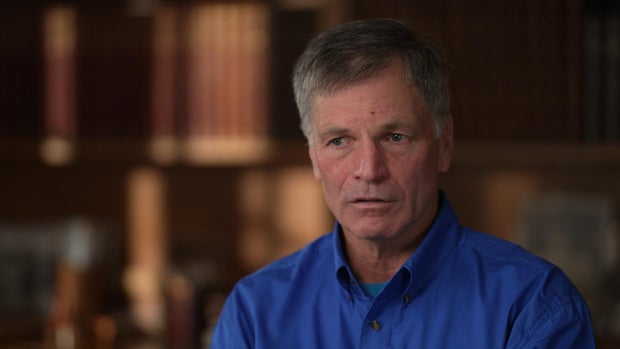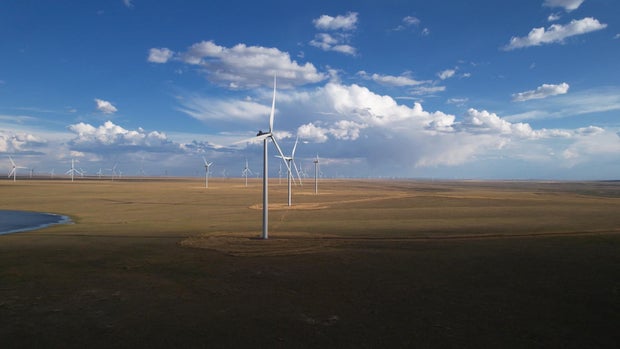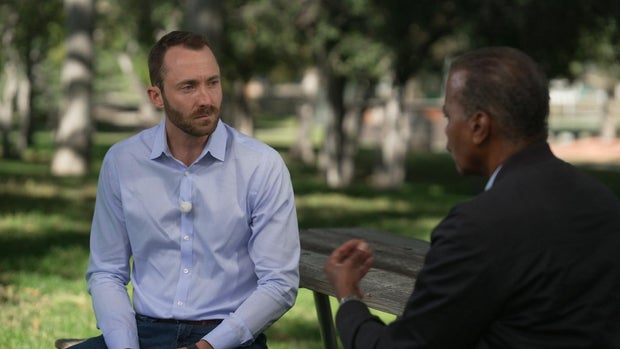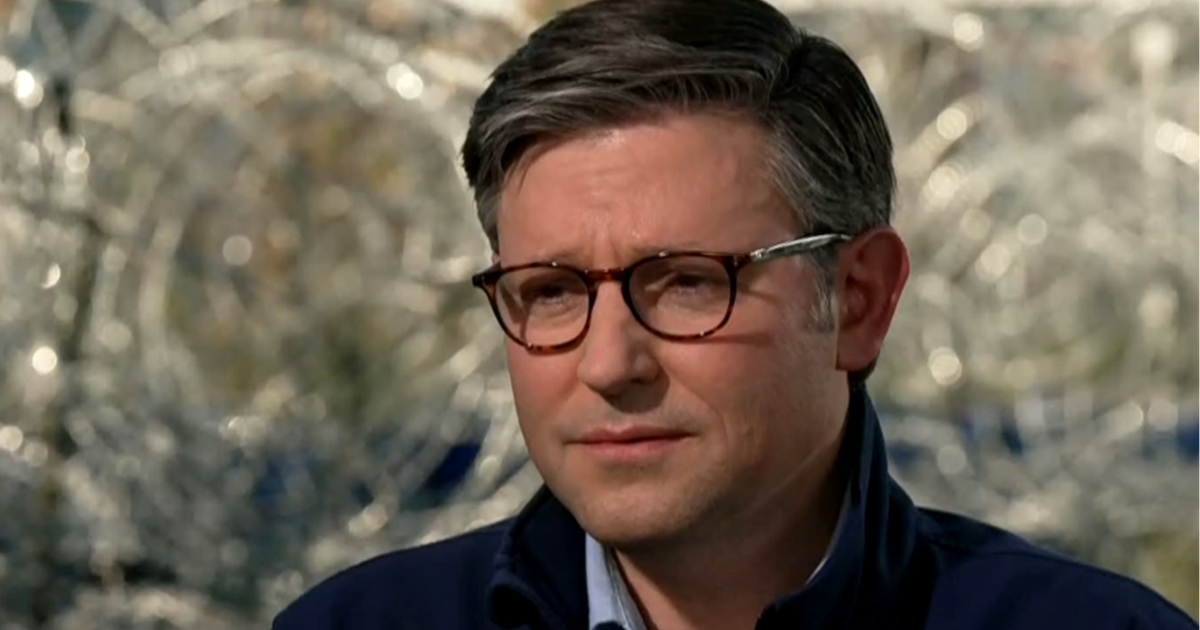Wyoming innovates to combat climate change as part of Gov. Mark Gordon's "all-of-the-above" energy policy
Wyoming Gov. Mark Gordon is promoting an "all-of-the-above" energy policy that features advances in wind and nuclear technology, despite pushback from his conservative state.
Though Gordon is the Republican leader of the nation's top coal mining state, he's emerging as a leading voice on climate-friendly energy projects. His ambitious, net-negative emissions goal prompted sanctions from the state's Republican party, but Gordon says he's moving forward regardless.
What's on Wyoming's energy agenda?
With his "all-of-the-above" energy approach, Gordon is trying to put energy projects on a fast track.
"Whatever you're going to do in energy, probably you're going [to] have something to do in Wyoming," he said. "We have tremendous wind resources. We have the largest reserves of uranium, important for nuclear energy, the largest coal producer, we're number eight in oil, number nine in natural gas."
With so many resources and a population of less than 600,000 people, the state exports 83% of its energy. A major project is underway to export energy to California.
Wind energy booming in Wyoming
Huge wind farms already dot Wyoming's landscape, and construction on a new one will soon begin to supply energy to California. The 600 planned turbines will generate enough electricity to power more than a million homes, Power Company of Wyoming President Bill Miller said. A new 800-mile transmission line is being built to export that clean energy.
"All the winds which blow from west to east pretty much are funneled through this part of the country," Miller said.
The new wind farm will cost more than $5 billion, with the investment in the transmission line coming out to more than $3 billion, Miller said. The project is being bankrolled by billionaire Philip Anschutz, who owns the Power Company of Wyoming.
"Society has spoken. That's what this country is going to go to, is renewable energy," Miller said. "More importantly, it's a project that contributes to the zero-carbon initiatives that we strongly believe in. It's going to happen. And this is the best place for it to happen."
Carbon capture and storage
Even with all its wind farms, Wyoming remains the nation's largest coal producer, but the state is looking for ways to minimize the carbon footprint. Holly Krutka, who runs the School of Energy Resources at the University of Wyoming, is focused on taking carbon dioxide out of fossil fuels, like coal, before the CO2 reaches the atmosphere. She and her colleagues are looking into carbon capture and storage.
The process involves removing CO2 from either the source of pollution or from the air, and then burying it deep underground. The technology is there, but some wonder if it's economically feasible.
"It will always be cheaper to do nothing than to add carbon capture and storage," Krutka said. "If you want to reduce emissions, this is part of the solution."
- Wyoming Gov. Mark Gordon pursues green, carbon-negative agenda in one of the nation's reddest states
At the huge coal-fired power plant near Gillette, the University of Wyoming is operating what it calls the integrated test center. Some of the flue gas that would otherwise go up the smokestack is siphoned off into labs like this one, where methods are being tested for making carbon capture more economical.
Finding an affordable way to capture carbon at the point of emission would be a game changer, the governor said.
"I know people will say, 'Well, you're just trying to extend the life of the coal mines,'" Gordon said. "I am. But I am also trying to do that in a way that is going to do more for climate solutions than simply standing up a whole bunch of wind farms or sending up a whole bunch of solars."
Testing new energy ideas
Wyoming also welcomed Crusoe Energy Systems in 2018 to tackle the problem of flaring, which happens when gas produced at oil wells is burned into the atmosphere. Flaring releases harmful emissions and wastes energy that could be harnessed, Cully Cavness, who co-founded Crusoe Energy Systems, said.
"If you could capture it all, it would power about two-thirds of Europe's electricity," Cavness said.
Cavness and his colleagues came up with the unconventional idea of putting a small, electricity-generating power plant right where that gas was being flared and wasted.
"What we do is we tap into that gas line. We bring the gas over to a power generation system," he said.
That generates electricity, which Crusoe Energy System uses to power computers at its onsite data center.
"It's a modern data center in every way when you're standing inside of it," Cavness said. "And then you step out the door and you're in an oil field."
At first the data centers were used to mine bitcoin, but most of that computer power is now being used by artificial intelligence companies.
Bring it to Wyoming
Crusoe Energy Systems President Cavness recognizes the value of Wyoming's energy-friendly economy.
"That's not necessarily an idea that everyone's going to embrace automatically right off the bat before it's been done before. Wyoming was," Cavness said. "They invited us to come do it for the first time here. We did it at a small scale. We proved that it could work. And that helped us attract the funding and the other projects that had helped us scale to where we are today."
Gov. Gordon hopes to get the message out to innovators to bring renewable and climate-friendly ideas to his state. He feels the state can progress if people stop focusing on what shouldn't be done, and instead focus on what is possible and how to embrace those possibilities.
"We want to be part of the solution," Gordon said.
for more features.






